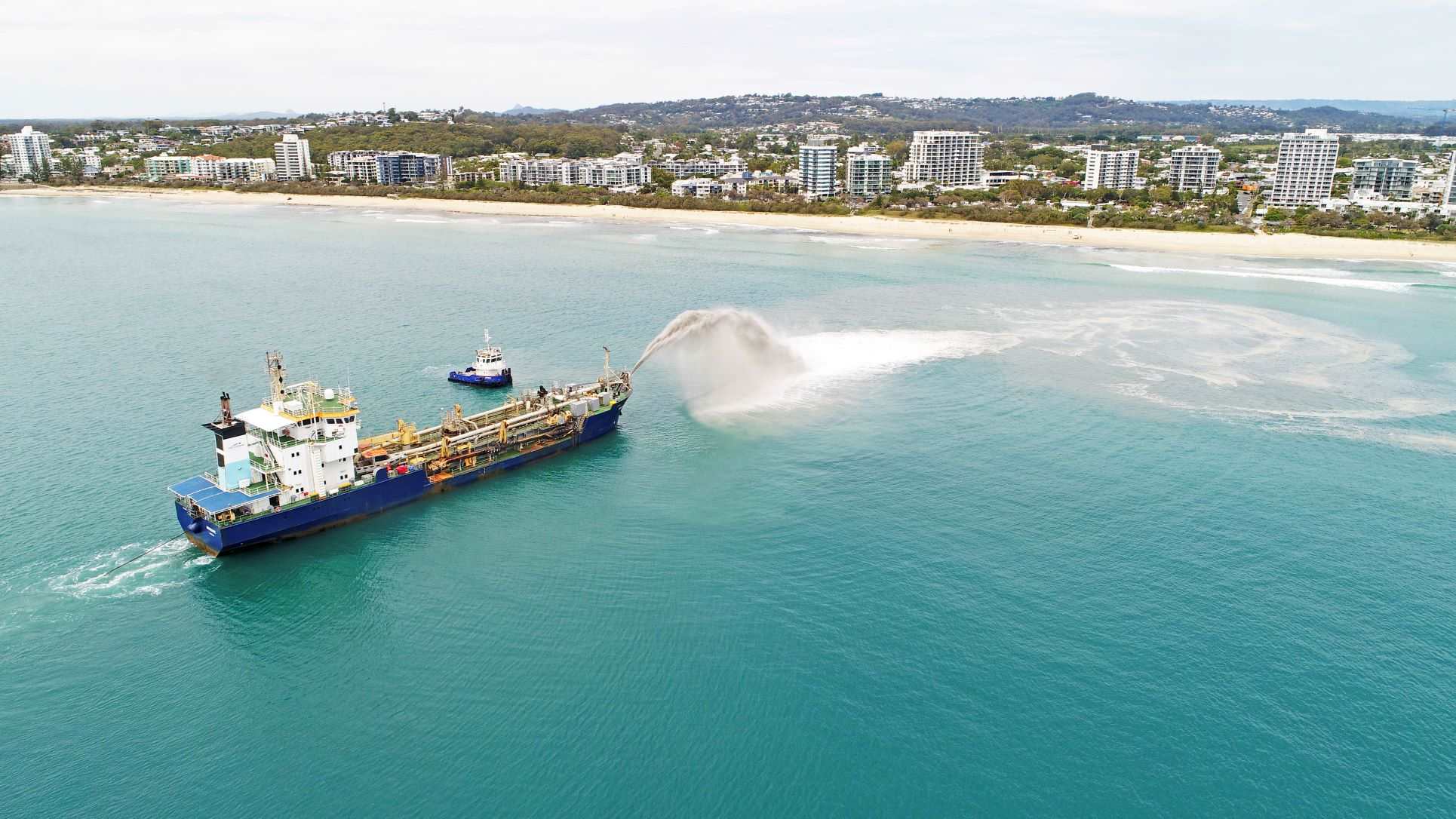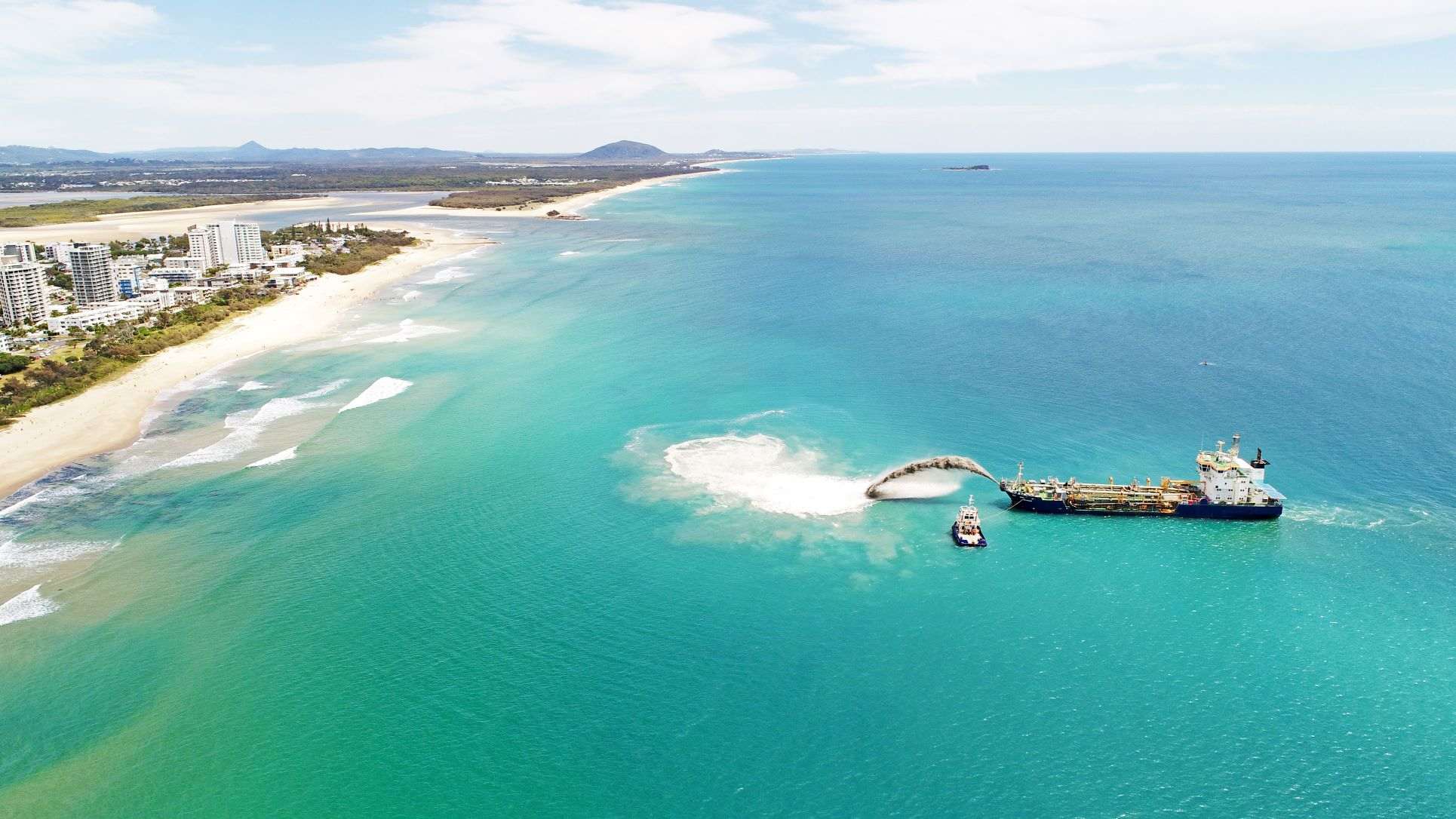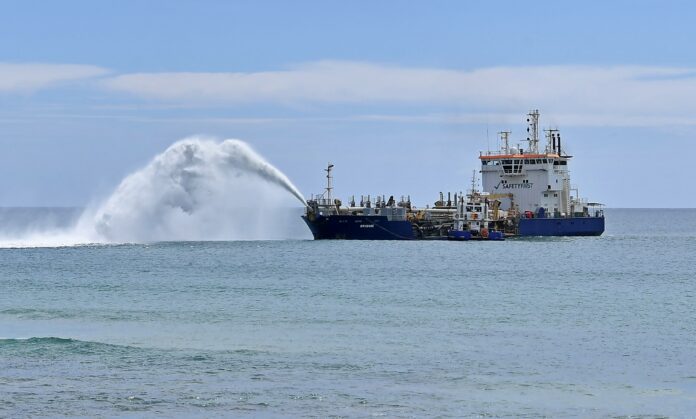An eye-catching technique to bolster beaches could be used in the region, after a successful test.
The results are in for the nearshore nourishment trial, which took place off the coast of Maroochydore late last year.
It took place on a small scale in a difficult location, to see if it could be used to replenish local beaches in the future.
The trial included using a trailing suction hopper dredge to carry sand from the Spitfire Channel, in Moreton Bay, to Maroochydore Beach.
Two techniques were then used to place sand just offshore: “rainbowing’’ and bottom placement.
During rainbowing, sand was mixed with water and sprayed from the ship’s bow in a huge arc, like a rainbow.
The technique was impressive and revived memories, and provoked mixed opinions.
With bottom placement, sand was released from the bottom of the hull in a grid-like pattern.
This happened about 300m offshore with waves, currents and tides then carrying the sand towards the shoreline, helping buffer it against future storms and coastal erosion.
Following a review of the data, Sunshine Coast Council concluded that it did produce an increase in sand on the beach (a net increase of 34,170 cubic metres of sand).
It found the technique could potentially be used on a larger scale for future nourishment campaigns along Maroochydore Beach and in other coastal locations.
The study concluded that cost efficiencies would improve if sand could be sourced closer to the Sunshine Coast (directly offshore) and that council should investigate a local offshore sand source and approvals required to access this.

Sunshine Coast Council’s Environment Portfolio Councillor Peter Cox said council had used data from experts, surveys and reports to determine the outcome of the trial.
“The trial showed us that yes, the science is correct and the technique is viable for placing larger quantities of sand in the future if needed,” he said.
“While there are things we can improve on, we now know that nearshore nourishment is a quick way to place a lot of sand on the beach and with these results, council can now consider it as beach replenishment option in the future if needed.”
See Have Your Say Nearshore Nourishment Trial for a full summary of the outcome of the trials.
Outcome summary
Beach surveys: Hydrographic surveys and cameras monitored sand movement since the trial finished. Monthly topographic (upper beach) survey results show there was a net increase of 34,170m3 of sand in the upper beach profile along Maroochydore Beach from December 2022 to April 2023.
Surf amenity: A study via UniSC has closely watched the impacts to surf amenity and the results were inconclusive – neither positive nor negative.
Reef impacts: More will be known about any possible impacts on marine plans and the reef when divers complete their next marine plant survey in November.
Safety: Measures were appropriate for the scale of works (closing of the beach and water), no incidents or near misses occurred during the operational phase of the trial.
Location: Using Maroochydore Beach for this project provided an opportunity to test the technique in a more challenging environment. It was also chosen due to a lack of sand. Maroochydore Beach was a challenging beach to undertake the trial at as it is not a linear beach. It is an embankment with rocky headlands and rivers at its boundaries. Sand nourishment using nearshore nourishment is hard to model along this beach – which is why a trial was needed. Straight stretches of beaches (Kawana-Moffat, Yaroomba-Maroochy North Shore) are a simpler setting to model and this technique will have a high likelihood of success if used at these types of locations.
Community sentiment: The small number of responses suggests that the majority of the community did not have major concerns with the project. Council confirmed that there were no customer requests created during the operational phase of the project, suggesting that beach closures were generally accepted.

Considerations for future campaigns
- Placement of sand to use the rainbow technique first and then place the sand via bottom placement behind the rainbowing to ensure sand is placed closer to the shoreline to allow it to migrate efficiently into the upper beach.
- The location of nourishment was appropriate and the buffer to the reef habitat should not be reduced to ensure no lasting impacts on reef habitats as a small portion of sand migrated south during the monitoring period.
- Extend the surf amenity survey for any future campaigns and include baseline data (pre-surf condition assessment).
- Cost efficiencies would improve if sand could be sourced closer to the Sunshine Coast (directly offshore). Council should investigate a local offshore sand source and approvals required to access this. (Refer to sand sourcing study Sunshine Coast – Coastal Management.)
Help us deliver more news by registering for our FREE daily news feed. All it requires is your name and email at the bottom of this article.





